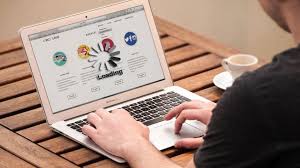A 100% working website doesn’t just have to look pretty. Its optimization is crucial both to offer a good user experience and to improve positions in Google.
One of those optimizations necessary for the web to perform perfectly is the loading speed, also known as WPO (Web Performance Optimizations). And it is that any page that takes more than 3 or 4 seconds to load, must improve its loading speed because users can leave the site and because Google can penalize it.
This means that even if you have created a powerful content marketing strategy to offer value to users and so that they spend more time on your pages, this work will be useless if you do not take care of this factor that affects the user experience.
Why does loading speed affect SEO positioning?
Google is a search engine that aims to provide users with the best experience, based on what they are looking for. Therefore, Google considers loading speed one of the essential factors to give a website quality and raise its position.
For Google, the user is the most important thing and seeks to increase their satisfaction. Its maxim is that visitors quickly find what they are looking for through adequate navigability or usability.
Tips to Optimize Your Website Speed
Many do not get the desired traffic or search engine position because they neglect this aspect of their project. In fact, there are many tools at your fingertips to measure your site speed and make improvements. But if you don’t take action, the problem isn’t going to fix itself.
If your loading speed exceeds 3-4 seconds, we advise you to get down to work to reduce that loading time, which is preventing you from positioning yourself and getting more traffic.
These are our recommendations and advice:
1) Hire a good server
The simple fact of hiring cheap and low-quality web hosting will give you more headaches than you think. In the long run, you will realize that it was not profitable for you due to the appearance of some problems, or due to the absence of some important functionalities such as these:
- internal cache system
- SSD drives
- PHP7
- SSL Certificate
If the hosting you have contracted cannot assimilate the needs of your site, this will be reason enough for your website to load slowly. So you should consider hiring another web hosting service.
2) Choose a suitable template
Before choosing a template for your content manager, based on the aesthetic factor, make sure that the theme is functional. That is to say, that it is well worked, made up of files (CSS style sheets, PHP, Javascript…) and that it can be adapted to all mobile device screens.
Although there are very powerful free templates, we advise you to always opt for a paid one, for the simple fact that they are personalized and have technical support.
3) Uninstall plugins and apps you don’t use
Once you install a theme in WordPress or in the content manager you use, do not forget to uninstall or deactivate those plugins that you are not going to use. This, without a doubt, will allow your website to have a better loading speed.
Also, be careful with some plugins that are very heavy, especially those related to social networks. Use tools like Performance Profiler to detect heavy plugins and replace them with others.
Of course, there are other plugins that are essential and are a must in your template:
- Autoptimize : Shrink CSS, HTML and JavaScript files.
- W3 Total Cache : Saves a copy of the web to those who repeat, so they don’t have to reload it.
- WP Optimize : To optimize and clean the database.
4) Optimize all images
If you have doubts when uploading an image because you don’t know if it is optimized, upload it and use the Google PageSpeed Insights tool ; this way you will be able to locate and know which images are going to minimize the speed.
Then, to reduce its size and load time, a very useful tool is TinyPNG; an online resource to reduce the size of jpg and png images while maintaining their quality.
5) Take care of the order of the web code
Just as images should be optimized, you should also do the same with the page code. To do this, we must eliminate all the duplicate code and order it.
If search engines read the code of a page from top to bottom, it will be necessary to structure it in that order and group it coherently; that is, putting all the CSS together, in the same document and the JavaScript separated from the HTML.
6) Use a CDN
This technology is highly recommended for use when your main server is far from users. That is, if for example your website is in Spain, but you receive a significant percentage from Peru, a CDN will be valuable for users in Peru.
7) Other improvements in web development
If after reading all these tips, you think you have applied each of them but your website is still slow to load, your site may need some optimization in web development.
By applying these 7 tips to optimize web loading speed, we are sure that your page will improve its statistics. In addition, the tools to know these metrics will show you what aspects to improve, so you can focus on that problem.
Sometimes, something that we thought was a difficult problem to solve, has turned out to be easier than we thought. Perhaps a simple image, very heavy, is the reason that prevents you from having a good loading speed and it is up to you to change it.
Have you ever done a speed test on your website? What are the most common errors you have found and how have you solved them?



